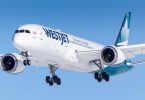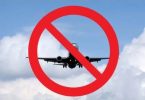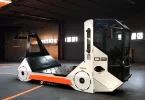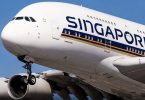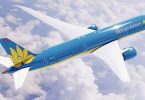In 2006, it came to IFALPA’s (International Federation of Air Line Pilots’ Association) attention that some aircraft manufacturers were looking into a so-called “Single-Pilot Cruise Concept” (SPCC), for long-haul operations. The concept holds that only one pilot would be required to remain at the controls for extended periods during the cruise phase while the other pilot(s) in the crew would be resting in an area out of the flight deck. In other words, flying solo in an aircraft designed to be operated by two pilots.
Clearly, this concept will have serious implications for professional pilots, and IFALPA’s technical committees were immediately tasked with reviewing the SPCC from a pilot’s viewpoint. As a result of this work, the following findings were made.
The SPCC concept is based on the continuing development and introduction of emerging technologies for example-voice recognition, data-based automation, and even electronic, flight-bag concepts, which may include attempts to extend the product’s functionality for future use in SPCC operations. However, the Federation is of the opinion that the SPCC is flawed and will result in
a reduction in flight safety for airline operations.
Specifically, the following safety issues are raised by SPCC:
– The absence of any form of cross checking between pilots.
– No fatigue avoidance countermeasure such as conversation.
– No safeguard against inadvertent napping by the single pilot remaining on the flight deck.
– Normal, abnormal, and emergency procedures are all written based on the assumption of a two-pilot operation.
– Standard Operating Procedures (SOPs) dealing with non-normal and emergency events invariably call for one pilot to fly the aircraft and the other to action the check list. Such SOPs would be compromised by the SPCC. For example, should a rapid depressurization occur in cruise, the pilot remaining on the flight deck would have to face this emergency alone: fly the airplane, initiating emergency descent procedures, handle the radios, talk to the Flight Attendants (PA), re-program the Flight Management Systems (FMC/FMCG), change the ADS… all while donning an oxygen mask and attempting to diagnose the problem.
– There are serious security implications of having only one pilot locked in the flight deck. Should there be a security incident and the flight deck door is blocked, either intentionally or unintentionally, that pilot would have to continue and terminate the flight alone. The SPCC would then lead to a “single pilot operation.”
– Physiological needs are not taken into account; with the SPCC, the on-duty pilot would be unable to leave the flight deck to satisfy those needs, which in turn could lead to discomfort and distraction.
– Certain regulators require that a pilot should wear an oxygen mask at all times if alone in the flight deck above 35,000 feet (for example, if the other pilot has to leave the flight deck briefly for physiological needs). With the SPCC, that would mean extended periods of time wearing a mask and breathing oxygen. This in turn presents unknown physiological and fatigue implications.
– One of the cornerstones of flight safety is redundancy. The SPCC provides no back-up for the pilot at the controls, should he become unconscious or otherwise incapacitated. There have been a number of incidents documented where one pilot has become incapacitated and the other pilot has been able to recover the situation and bring the flight to a safe conclusion. In a
SPCC scenario, the outcome may well have been a tragedy.
As a result of these very serious safety concerns, IFALPA will oppose the introduction of the SPCC until such time as these concerns have been resolved. As always, IFALPA will continue to monitor the developments in cockpit design and technologies and work closely with the manufacturers to ensure that safety continues to be the prime concern and is never put aside for commercial reasons.








